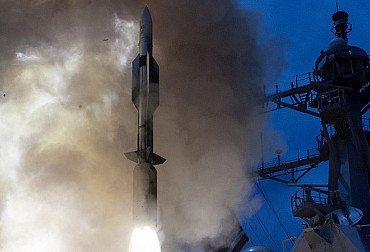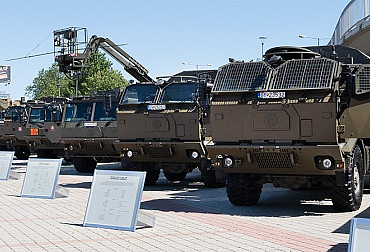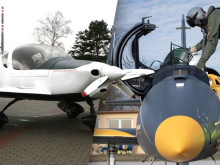The capabilities and capacities of the Air Defence need to be continuously expanded. The Czech Republic is still at ground zero, but late is better than later
When Jiří Hynek, president of the Defence and Security Industry Association of the Czech Republic, evaluated the recently held IDEX trade fair in Abu Dhabi, he said that a good half of the exhibitors were involved in some form of unmanned aerial vehicles or defence against them. In recent conflicts, their growing numbers and effectiveness are evident, as is the proliferation of capabilities and methods of deployment. Just as drones are gradually taking over more and more of the tasks of reconnaissance and tactical aviation, the importance of air defences capable of countering the threat they bring with them is growing in mirror image. And if it is true in all areas of the military that one must prepare for the next war, not today's or even the last one, it is doubly true in the field of air defence, given the rapidly advancing technologies.
In addition to the conventional tactical and strategic aircraft of the next generation, which are often characterised by some variant of stealth capability, there is a need for assets that can cope with drones of all categories (C-UAS) deployed in varying numbers. And the remit of air defence assets also includes defending against mortar and artillery projectiles, unguided and guided missiles, cruise missiles and ballistic missiles (C-RAM). The importance of all these threats is growing exponentially.
In this respect, the Czech public media is currently resonating with the problems of integrating Israeli MADR radars for the 26th Command, Control and Reconnaissance Regiment, which will be one of the cornerstones of the future air defence capabilities of the Czech Armed Forces. This is an advanced technology that is part of Israel's Iron Dome (a system designed to disable short-range rockets and mortar shells) and David's Sling (a system designed to disable medium-range rockets and cruise missiles), and as such can without a doubt be described as one of the best, if not the best, solution the market has to offer.
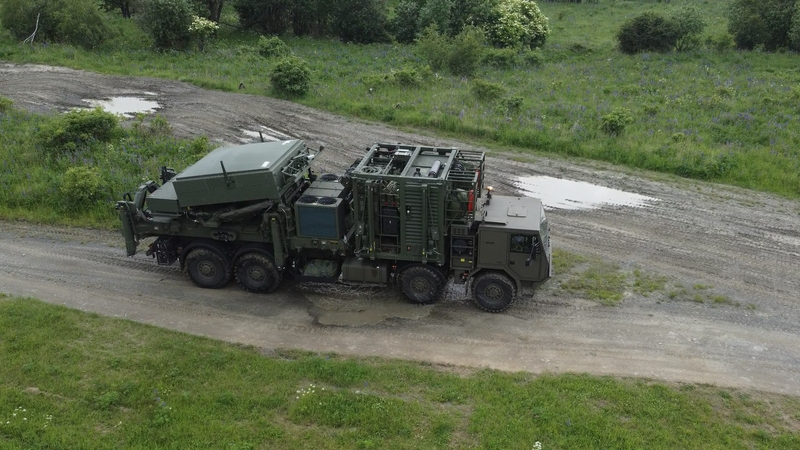 Picture: The SPYDER system as a whole uses the Elta EL/M-2084 radar, which is a great advantage for the Czech Army, as the same type is now being introduced into its arsenal as a 3D surveillance radar of the MADR category. | Ministry of Defence of the Czech Republic
Picture: The SPYDER system as a whole uses the Elta EL/M-2084 radar, which is a great advantage for the Czech Army, as the same type is now being introduced into its arsenal as a 3D surveillance radar of the MADR category. | Ministry of Defence of the Czech Republic
The technical and, presumably, communication problems have to be overcome, if only because the same type of radar will be used by the SPYDER anti-aircraft suites from the Israeli company Rafael. The delivery of four batteries of this system will enable the decommissioning of the outdated KUB sets, and at that moment the Czech air defence forces of the 25th anti-aircraft missile regiment will have a modern SHORAD system at their disposal. The only other means are the portable RBS 70 and RBS 70NG very short range systems.
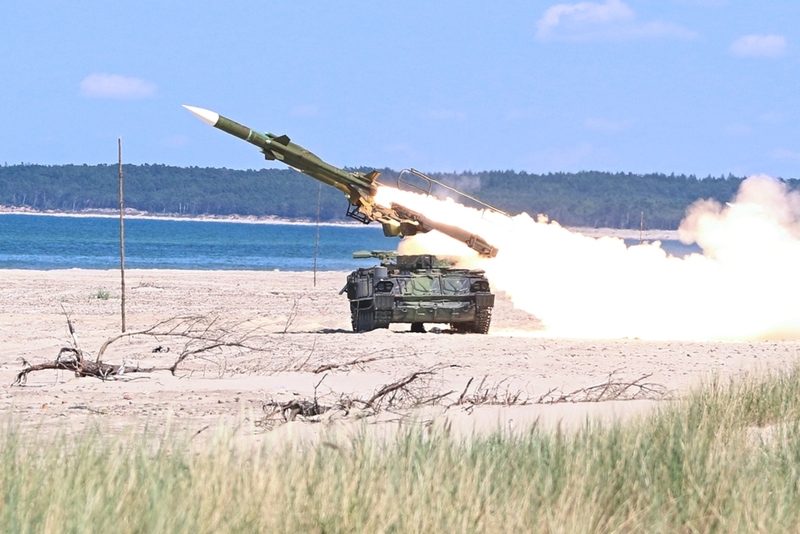 Picture: 2K12M KUB M anti-aircraft system in the service of the Czech Armed Forces | Ministry of Defence of the Czech Republic
Picture: 2K12M KUB M anti-aircraft system in the service of the Czech Armed Forces | Ministry of Defence of the Czech Republic
Part of the debt that all governments since 1993 have created to the armed forces is that instead of technical development adequate to the development and strengthening of capabilities, we are only at the stage where we are replacing obsolete systems designed to counter conventional threats with great delay and difficulty, while the means to counter today's and future forms of air threats are being discussed in theory.
The successful integration of new radars and batteries of the SHORAD system will be a necessary zero step, which must be followed by a significant strengthening of capacity through the acquisition of more assets so that the Czech Army is able to defend a sufficient number of so-called ODOS, objects important for national defence. The 2019 Concept of Build-up of the Czech Army 2030 speaks of three for the 2030 milestone; and it will need to be evaluated in light of the development and availability of technology whether this is a satisfactory number. Tactical UAVs are increasingly deployed in conflicts, with Iran, for example, capable of producing them in large numbers, and Ukraine is seeing dozens of attacks a day that the ADs there are trying to repel. The number of batteries, the coverage of a sufficient area by their own air defence forces with an adequate supply of ammunition are absolutely crucial issues.
The high-intensity conflict taking place just a few hundred kilometres from our territory indicates that the approach and numbers set up so far, which corresponded to the earlier possibilities of the defence budget, are not sufficient. The air defence capability that will be acquired by the Czech Army after the full integration of MADRs and SPYDER will be able to deter isolated threats such as terrorist or accidental attacks of a very limited scale, but certainly not the long-term effects of a large number of hostile assets of various kinds. Coupled with the experience that the acquisition and deployment of a modern air defense system is not a problem that can be solved "overnight" but takes several years, it is neither revelatory nor bold to write that yesterday was too late. But better late than later.
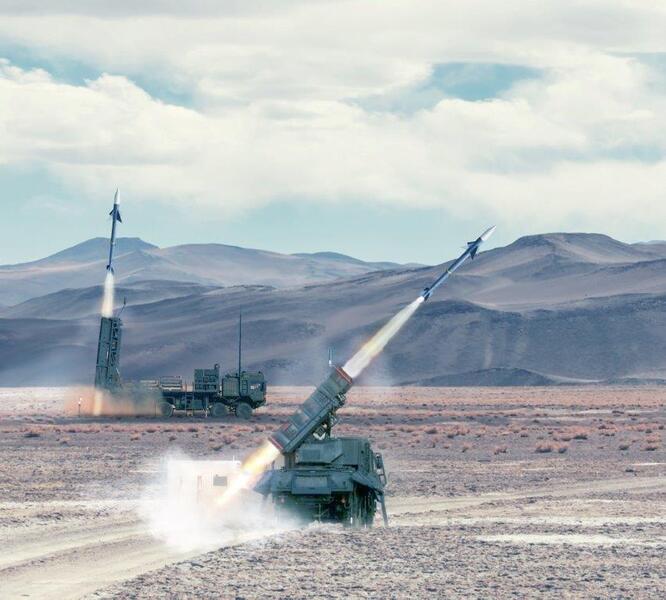 Picture: SPYDER anti-aircraft set | Ministry of Defence of the Czech Republic
Picture: SPYDER anti-aircraft set | Ministry of Defence of the Czech Republic
We have repeatedly addressed the issue of maneuver force air defense. This capability is currently provided by the somewhat cumbersome RBS 70 portable laser-guided systems carried on special Tatra trucks, of which the 252nd Anti-Aircraft Detachment has 32 in the two versions mentioned. Its units are assigned to task groups, but neither the 4th Rapid Deployment Brigade nor the 7th Mechanised Brigade has its own organic air defence. The infantry has no shoulder-launched anti-aircraft missile complexes (such as the US Stingers). It lacks the ability to destroy drones with airburst munitions (the German Flakpanzer Gerpard anti-aircraft tank, according to Ukrainian experience, needs an average of six rounds to destroy a drone in this regard).
The capability of the air defence system to secure ground forces even while on the move is envisaged by the Concept of build-up of the Czech Army 2030 up to the 2030 milestone. This means selecting a suitable platform and equipping it with an effective anti-aircraft missile system, ideally combined with an automatic cannon capable of firing airburst munitions. Analogous to the solution that the army is planning to choose for self-propelled mortars, according to current information, it will be a suitable Pandur II 8x8 chassis, certainly for the 4th Brigade, and probably also for the 7th Brigade, where the chassis of an established IFV would otherwise be an alternative. Such projects do not have a concrete form yet, but there is nothing to wait for. Air assets, and especially unmanned ones, will only increase over battlefields in the future.
Missile defence is an entirely separate chapter. And especially here it does not seem to be an effective independent Czech way. German Chancellor Olaf Scholz spoke in December about the fact that European states should obtain a common missile defence within five years, and the Czech Republic is quite rightly interested in this project. At that time, there was talk of the Israeli Arrow 3 system or the American Patriot system, which is already widespread in Europe. Once again, the question of capacity will be on the table. What was at least theoretically true until 24 February 2022, namely that the main threat in this respect would come more from terrorists or terrorist regimes, is no longer the case ('terrorist regimes' in the original sense of the word; Putin's regime can, of course, be described as terrorist, but on a scale that goes beyond the normal definition).















